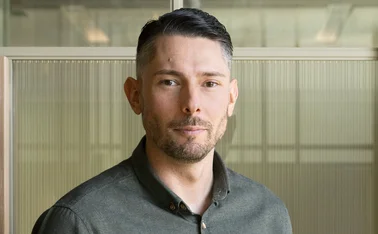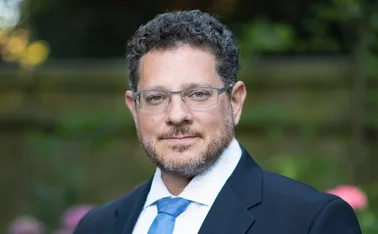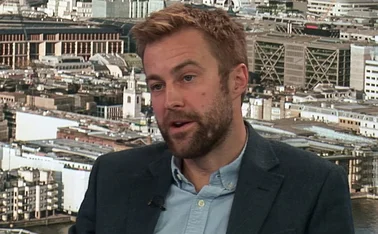
Interview - Gilles Galludec: Learning to share

Index insurance has come of age from its humble beginnings but more knowledge sharing is required if the market is to reach its potential, according to Gilles Galludec, program manager for the World Bank’s Global Insurance Index Facility.
Since its launch in 2009, the World Bank’s Global Index Insurance Facility has worked to overcome the low insurance penetration rates in developing countries in Africa and Southeast Asia by promoting index insurance in the place of traditional indemnity-based solutions.
Working in partnership with global reinsurers including as Swiss Re, Axa and Grameen Crédit Agricole – as well as local carriers – it has chalked up some notable successes, according to GIIF programme manager Gilles Galludec.
“Since 2012 we have seen enough evidence to say the number of farmers insured with index insurance has increased and will keep growing,” he comments.
“GIIF has started more recently to develop new markets in Africa: in Kenya and Tanzania with ACRE Africa; in Rwanda and Zambia with Micro Ensure; in Senegal, Benin, Mali and Burkina with Planet Guarantee; and in Mozambique with Guy Carpenter. Outside Africa we have also good stories in Sri Lanka with SANASA and in Indonesia, the Philippines and Bangladesh. We are also supporting markets in the Caribbean.”
But while things are going “in the right direction”, the uninsured percentage of the population in a number of emerging markets remains very high [a World Bank study conducted in 2010 reported that global agriculture insurance premiums amounted to $24.31bn (£16.37bn), but Africa and Latin American countries represented only 0.7% and 3% of the total premium volume] and awareness of the products among key decision makers is low, according to Galludec.
Index insurance explained
Index insurance pays out benefits on the basis of a predetermined index – such as level of rainfall – for loss of assets and investments, primarily working capital, resulting from weather and catastrophic events, without requiring the traditional services of insurance claims assessors. It is designed to allow for speedier and more objective claims settlement processes.
New knowledge platform
In an attempt to combat this, in January this year the GIIF launched its knowledge platform – an online facility featuring products, research and best practice for innovative insurance solutions. The platform aims to raise awareness of index insurance and innovative products and will also “crowdsource” vital market intelligence, Galludec says.
“The private sector has the knowledge and it needs to share that. We also need to develop new types of product for insurance – moving from products targeting individual customers to more portfolio[-based] products,” he explains.
Informally it is hoped the platform will facilitate dialogue among the people working in this sector, who are often based in far-flung corners of the globe. “We try to make sure people talk to each other. It’s a very nascent industry so we need to share and we need to create that network.”
While the private sector and the public sector have different needs, the platform is intended to be a resource for all interested parties, Galludec says. “The obvious beneficiaries are the private sector stakeholders because it is a new model for them and there is a huge opportunity for new business,” he comments.
“But there is very weak knowledge of innovative insurance in the public sector and it’s also the role of the platform to build the capacity of regulators and public decision-makers [to innovate],” he says.
“We [need to] listen to the private sector to understand what is technically feasible. It is also important to understand what the regulators and other decision-makers want.”
While the difference in need and awareness between the public and private sectors is an issue, raising awareness among customers is also problematic within nascent insurance markets, according to Galludec. For that reason it is vital that insurers create “affordable and simple product that are easily understood” and there is more work to be done in this area, he explains.
Role of technology
Discussing some of the obstacles that hold back wider uptake of index insurance, Galludec says different levels of technological advancement mean what works in some geographies does not work in others. But he says technology is not the barrier it once might have been.
“If you look at the penetration rates of mobile phones across the globe there are still regions where you don’t have access to mobile phones – but if you look at this as a distribution channel for index insurance, it is something that’s actually possible almost everywhere.
“The second aspect of technology is the use of weather stations or satellites. The question there is how to access information and how to use that information to develop products. We have recently signed partnerships with seven data providers to make sure this part of the equation is taken into account. Weather stations, however, are more complex because it’s really about money and commitment from local stakeholders.”
Despite the gains being seen, it is likely to be a long time before index insurance products are distributed directly to the customer, meaning partnerships with local intermediaries and aggregators remain key, he adds.
“Banks, co-operatives and agri-businesses in the countries in which we operate are also critical. We need to bring them on board to distribute index insurance products. That’s something which is progressing quite well but maybe too slowly, so we’re working on that side of the issue.”
While multinational reinsurers have been at the vanguard of the first wave of index insurance, local carriers are “absolutely necessary” to the success of the scheme, he says. “You don’t develop insurance in any country without a license so you need to be a local insurance company to start selling insurance, whatever kind of product. That’s a key point in the ecosystem.”
While the growth of the index insurance market is the GIIF’s key aim, it is vital any growth is sustainable, Galludec says. “Normal insurance, in particular agricultural insurance, is not easy to develop. It is often dependent on subsidies. The ambition is to develop a new industry – but it should be a sustainable industry. That’s the long-term goal.”
Video Stories
According to the World Bank Group, climbing out of poverty and starting a business are hard enough as it is but, in emerging markets, the breadwinner’s death can mean financial devastation for a family, which is plunged back into poverty.
Things change when poor people have insurance. Products such as micro-insurance, agricultural insurance and index-based weather insurance are increasingly necessary as instruments for safeguarding against specific risks.
The organisation believes with insurance, not only can the family be protected against sudden deaths, people are also more likely to invest in expanding their farms, establishing new businesses, or sending their children to school.
These videos on its website explain how insurance is helping poorer rural communities and the impact it is having.
Insurance and Adaptation
Farmer Driven Opportunities Members of the International Research Institute for Climate and Society’s Financial Instruments Sector Team explain how farmer-driven index insurance can help manage climate risks and make farmers more resilient and productive.
Index-based livestock insurance
A video of a mobile-based platform to help livestock farmers in Kenya purchase livestock insurance and acquire value-added services.
Only users who have a paid subscription or are part of a corporate subscription are able to print or copy content.
To access these options, along with all other subscription benefits, please contact info@postonline.co.uk or view our subscription options here: http://subscriptions.postonline.co.uk/subscribe
You are currently unable to print this content. Please contact info@postonline.co.uk to find out more.
You are currently unable to copy this content. Please contact info@postonline.co.uk to find out more.
Copyright Infopro Digital Limited. All rights reserved.
You may share this content using our article tools. Printing this content is for the sole use of the Authorised User (named subscriber), as outlined in our terms and conditions - https://www.infopro-insight.com/terms-conditions/insight-subscriptions/
If you would like to purchase additional rights please email info@postonline.co.uk
Copyright Infopro Digital Limited. All rights reserved.
You may share this content using our article tools. Copying this content is for the sole use of the Authorised User (named subscriber), as outlined in our terms and conditions - https://www.infopro-insight.com/terms-conditions/insight-subscriptions/
If you would like to purchase additional rights please email info@postonline.co.uk
Most read
- Covéa shrinks staff numbers by almost a third amid further losses
- DLG or Esure – which Peter Wood baby is most likely to bounce back?
- Aviva CEO warns home insurance premiums need to go up







